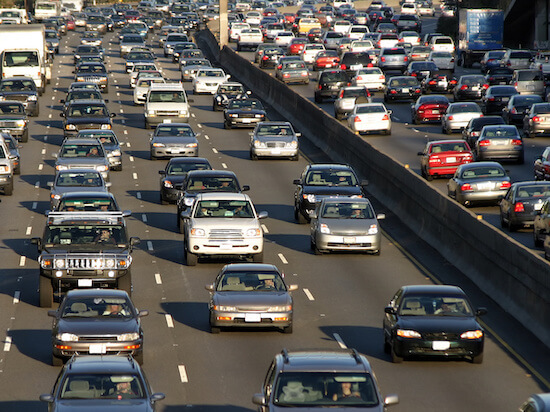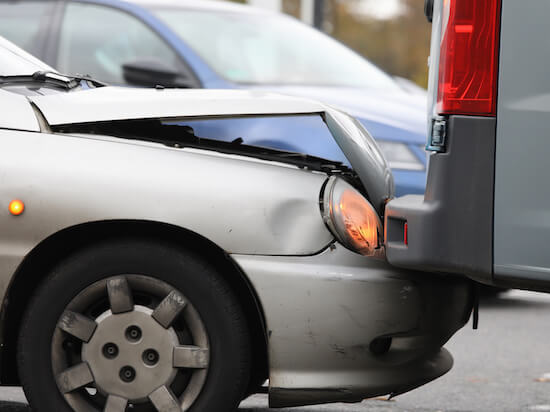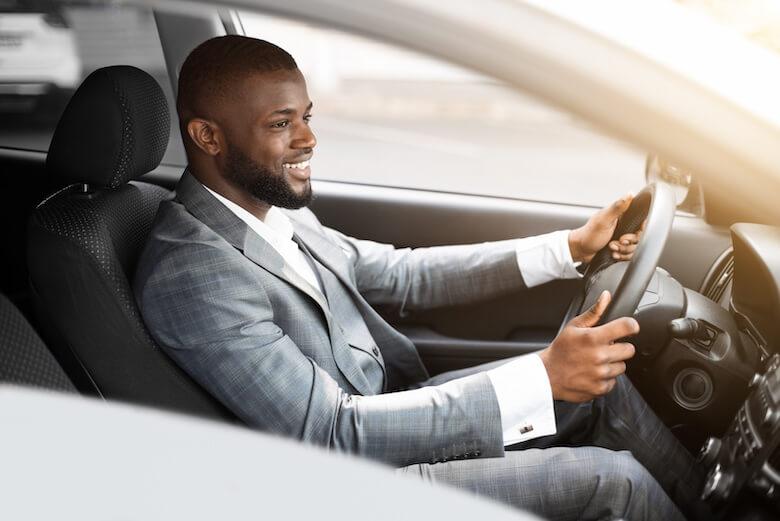In 2019, a tad over 157 million people were employed in the U.S. By 2022, about 2 million more employees are expected to join the workforce. The latest Gallop Poll (from 2018) reported that 77% of Americans drove their car to work by themselves, while 6% carpooled to work. By 2019, Bloomberg reported more than three-quarters – or 76.4% – of commuters drive to work alone, with an average commute of 27.6 minutes.
Use eTags© to Quickly Complete Your DMV Service. Renewals, Title Transfers and More, All Online!
In San Francisco, 57% of commuters drove to work alone in 2019 and 70% in Chicago plus Portland
According to the Dept, of Transportation’s Federal Highway Commission, in June 2021, more than a year into the pandemic, travel on roads went up…adding 35.7 billion vehicle miles traveled when compared to June 2020. Traffic was highest in the northeast region, while the least was in the south gulf area.

Who drives to work
Driving safety for employees includes a variety of workers including the traditional nine-to-five office professional. Employees drive their own vehicles for a number of work-related activities. Think about the retail store manager who drives to the bank regularly for deposits. Or the realtor who drives to all their showings.
How about the receptionists who picks up lunch for everyone. The marketing professional who drives to vendors all the time like a print shop or special-effects studio. The auto insurance agent that makes house calls all the time. The list goes on and on. In fact, in 2019, only 5% of commuters used public transportation to get to work in the U.S. Everyone else is driving!
In 2020, the New York City subway had daily ridership of about 2 million during the pandemic; over 6,400 subway cars collectively traveled about 325 million miles last year
Don’t forget company-owned vehicles
The list becomes even bigger when you consider all the employees that drive company-owned cars and trucks: the delivery drivers, taxi drivers and chauffeurs, truck drivers, and others. There are even service companies with vehicle fleets such as pest control or housekeeping businesses that let their employee drive their company-owned cars. Plus all the internet, cable tv providers, phone and utilities companies who have their own vans.

Driving safety tips for all sorts of employees
• Practice defensive driving; always look ahead
• Wear a seat belt on every trip, and ask your passengers to buckle up too
• Always be rested before getting behind the wheel, no drowsy driving
• Make sure your prescribed medications don’t affect the way you drive
• If you’re a truck driver, think of your health and safety when deciding
how many miles you want to cover in one trip
• No distracted driving: no texting, no phone calls, no drinking and driving
• Always drive within speed limits, and be extra careful in school zones
• Give yourself enough distance to react, especially in bad weather
• Be realistic about how long it would take you to drive somewhere;
give yourself enough time so you’re not anxious behind the wheel
• No road rage, things can escalate quickly
• Make sure you have all credentials for your vehicle; car registration, driver license, and auto insurance
• If you’re driving for hours on end, make sure you take a break every few hours to stretch your legs and move about for a bit
Non-owned autos is a thing
Even when employees aren’t being closely watched for their driving behaviors, an employer can still be responsible in the case of a car accident. “Non-owned autos” is the term used by insurance company policies to describe cars used in connection with business. Like the marketer who goes to the print shop.

In most states, the employee’s insurance pays up first, and the business pays what’s left on the balance; pays second. Although the company doesn’t own the car, the fact that the employee is conducting business puts a company at risk for non-owned auto liability.
Vehicles used for business have higher liabilities, so hired and non-owned auto insurance typically costs more than personal auto insurance
Non-owned auto insurance typically covers the damages to another vehicle or property. It also covers medical costs associated with injury to a third party from an accident. Plus, if you or your employee are sued as a result of a covered accident, defense costs are covered even if the suit has no grounds.
If you drive to work, or drive for work, keep driving safety top of mind!
